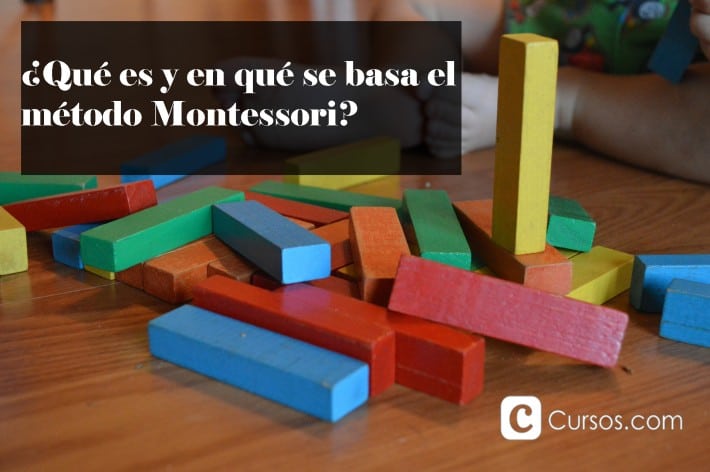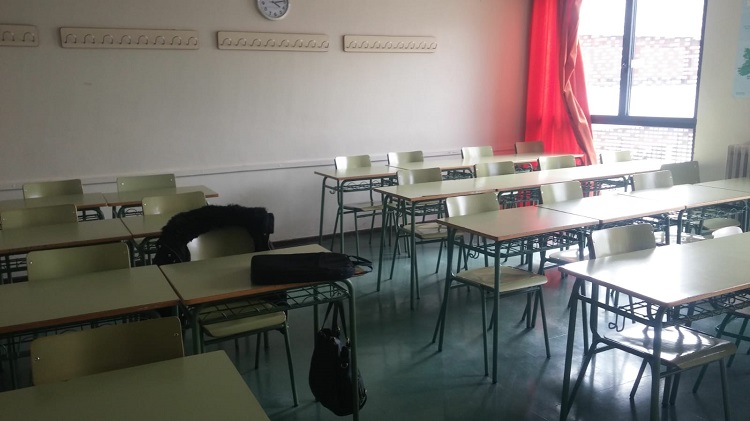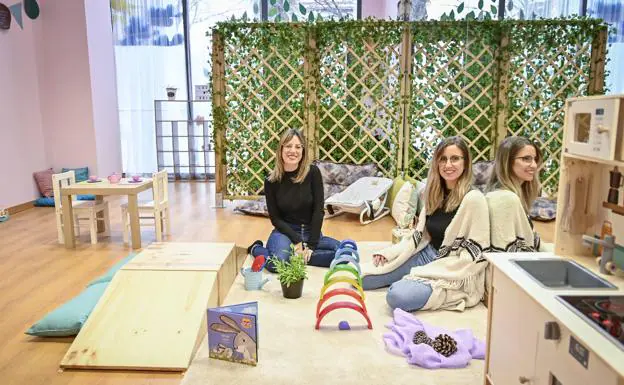The otherworldly quiet. This is how you recognize a true Montessori preschool. For over a century now, it is usually the thing that strikes people first, and anybody who knows what children ages 3 to 6 are usually like can see why. In a school where the Montessori Method is faithfully applied, the decibel levels will typically be eerily, monkishly low.
The second thing that strikes a visitor is the orderliness. Children go about their tasks in quiet. They clean up after themselves. When they talk, it is politely and at a whisper—even when there is conflict, which is quickly and calmly resolved. Then there is the focus. The children apply themselves to activities with the sort of concentration most adults find hard to muster. It can be a transformative experience. It should be.
For as long as I can remember, I have been obsessed with education. I have read about it widely and deeply, thought about it, investigated it, practiced it in many settings. My research and experience have convinced me that what is improperly called the Montessori Method (more on “improperly” below) is not only superior to all alternatives but categorically so—not in the way that Mozart can be said to be superior to Salieri but in the way that vaccines can be said to be superior to homeopathy. I realize that this is a bold claim, but I hope not only to defend it but also to show why it is crucial to frame the claim in this way.
The Montessori Method is not only superior to all alternatives, but categorically so.
We all care and fret about education. We realize how important the issue is—indeed, we often gravely intone, it is perhaps the most important there is. So there is something deeply wrong about the fact that Montessori is still a niche movement in education over a century after its birth. This is a catastrophe for the obvious reasons—all the human potential wasted by subpar education when better alternatives have been available—but also because our collective blindness reveals something deeply rotten at the heart of our collective culture.
What’s more, this should be doubly shameful for us Catholics. Dr. Maria Montessori, the inventor of the Method, was a devout Catholic, but it is not just that. The Method is Catholicism as applied to education, in the way that you might say that the spirit of St. Francis is Catholicism as applied to the Beatitudes. It would have been a disaster if St. Francis had been condemned by the church as a heretic. But in a way, it would have been even worse if he said everything he did—and nobody cared. That, I want to argue, is what is going on.
The Materials and the Method
What is it about Montessori? In my experience, even most experts miss the crucial thing. Montessori schools feature mixed-age classrooms that look the same everywhere in the world because everything in the environment has been thought out for very specific reasons. Students can choose whatever activities they like from a prescribed list of options—the famous “materials” developed by Dr. Montessori—and can work on them for however long they want. Those materials enable students to learn by using their hands rather than from direct instruction, a process that education theorists describe as the “constructivist theory of education.”
People often focus on the materials because they are what is most obviously distinctive about the Method, and it is true that they are clever in countless ways. Each activity is intended to be self-correcting and hands-on. They are (very) cleverly designed so that the child will discover step by step what she is supposed to learn. Each activity is a building block to the next. So when children learn to trace shapes inside metal insets that have various geometric shapes, they unwittingly practice the fine-motor skills that will enable them to pick up writing, which they typically do much faster than the average child. Equally well-conceived are the mathematics activities, which work with concrete materials like beads and demonstrate that anyone is able to become comfortable with math.
The Method is Catholicism as applied to education, in the way that you might say that the spirit of St. Francis is Catholicism as applied to the Beatitudes.
Then there is Dr. Montessori’s theory of the child. She pointed out that all infants learn how to walk and learn a language, but because it happens to all of us, we forget how incredibly difficult it is to do. Children expend tremendous effort to do it, with amazing stubbornness, trying over and over until they get it right, eagerly, and they do so of their own accord. This natural drive to learn goes on—unless it is snuffed out. Once a child is taught that she must learn only because of the threat of punishment or, as is more popular these days, the prospect of reward and encouragement, her most powerful engine of motivation is essentially wiped out, as if a new program overwrote another in a computer.
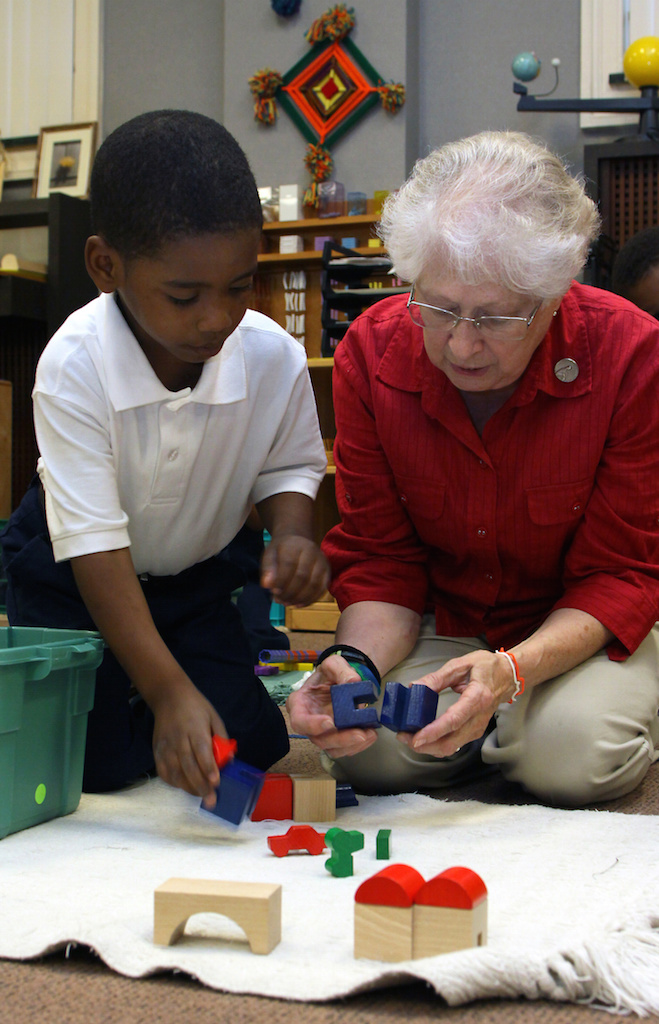
Once a child is ready to walk, she will expend tremendous effort to do so, but only when it is the right time in her development. So it is with other skills. Trying to teach, say, writing, on a rigid schedule will only convince a child that she is unable to do so, sapping not only that endeavor but her self-confidence and willingness to learn more generally. We can all attest from our personal experience that we easily become frustrated and despondent whenever we have to do things that are either far too easy or far too hard; but when our work is right at the edge of our comfort zone, challenging but doable, not only are we better at tasks, but we often find them positively thrilling.
This natural drive is largely hard-wired within us; and because of the freedom in a Montessori classroom, children will naturally pursue those activities that are right at that pleasurable edge of the comfort zone, where we have the most focus and energy. It is not just that they will learn, say, math much faster. The system is designed so that learning, effort and initiative are all associated with pleasure and success during the most formative years of life.
Montessori is often thought of as “progressive”—no grades, all that stuff about freedom—but other aspects of the method can seem rigid. There are rules; they are just very different from the rules in a typical classroom. The children have to clean up after themselves, whether by putting away activity tools once they are done with them, wiping up spilled juice or sweeping the classroom at the end of the day. But unlike a typical American preschool, the rules do not coerce “sharing,” since they are not an attempt to manage children according to the desires of adults. If Alice will not share with Bob, Bob will just have to learn to wait. Everybody loves the idea of children “learning through play,” and Montessori is sometimes described as encouraging this, but serious Montessorians react to such a formulation with horror.
In Montessori schools, children apply themselves with the sort of concentration most adults find hard to muster.
The activities, it is emphasized, are work. Children have play time, of course, but classroom work is work. “Learning through play” is seen as an admission of defeat, an implicit statement that learning is intrinsically unpleasant and can only be made pleasant artificially. The Method is designed for the opposite goal, to teach that work is intrinsically rewarding; therefore it must protect children from external influences that might replace internal motivation for work. Hardcore Montessori parents will even—heresy of heresies!—refrain from praising their children for a job well done, since the idea of doing well to make Mom and Dad happy is already toxic. (So they say, “Wow! You must be so glad you drew that beautiful unicorn!” rather than “Wow! I’m so happy you drew that beautiful unicorn!”)
As if to make well-to-do private school tuition payers run screaming from the room, and teachers’ union reps clutch their pearls, Dr. Montessori wrote that the bigger the class size the better, since it meant more opportunities for students to figure things out on their own. She also wrote that uneducated people made better teachers than the educated ones, since they were less likely to try to deviate from the Method; and that the worst teachers of all were those with education degrees and previous teaching experience in the traditional system. The Method is sometimes criticized as too inflexible, and it can inspire comparisons to Steve Jobs, with his imperious obsession with aesthetics, minute detail and controlled environments. Most of a Montessori teacher’s job is presenting activities to children, and this is choreographed down to practically every word and every gesture.
Dr. Montessori wrote that the bigger the class size the better, since it meant more opportunities for students to figure things out on their own.
If every activity in the Method must be presented in exactly that way, if every material must have exactly those dimensions, be exactly that shade of that color, it is because Dr. Montessori proved through countless experiments, over decades, on children from every background and on every continent, that those specific attributes produced the same results.
The idea that less-educated teachers are better because they take less initiative shocks us because we instinctively feel that teaching is, or ought to be, a creative activity in which teachers must deploy their spontaneity and innovative skills. But think about what that means. If you hear that a medical researcher working on an intractable disease has unleashed his creativity and thought outside the box, you will applaud. If you hear that your airplane’s safety officer has decided to throw the rulebook out the window and express her inner creativity, you will demand to get off the flight. Human civilization advances not when a genius produces new knowledge but when novel insight gets translated into processes that enable non-geniuses to disseminate the product of that knowledge throughout society. It is not glamorous, but it is what actually changes the world. We know we have made progress not when a genius is able to do something new but when non-geniuses are able to repeat it.
Not the Montessori Method; the Scientific Method
Maybe the above intrigues, pleases, shocks the reader. Maybe all at the same time. Maybe we are willing to be sold on the idea that the Method is interesting and has valuable things to bring to the table. But that is not the claim I make. My claim is that Montessori is vastly and unquestionably superior to the alternatives. According to a plethora of studies, including randomized controlled trials, which have the highest evidentiary power in social science, Montessori children do better at reading and math but also outperform other children on a whole host of other indicators, including social skills, self-regulation, creativity and their sense of “justice and fairness.” The effect is more pronounced with minority and lower-income children. As far as I know, no method has been shown in a study to outright erase the income achievement gap—except Montessori. And the latest developments in neuroscience are just now catching up to Dr. Montessori’s theory of the child developed a century ago and confirming it.
Montessori children do better at reading and math but also outperform other children on a whole host of other indicators.
Studies are not perfect. We all know that. Science evolves and one paradigm replaces another.
But I have not yet gotten to the core of my argument.
People typically introduce the Method by talking about the materials or about the philosophy behind it. Sometimes they talk about the life of Dr. Maria Montessori. And it is easy to see why, because it is such an inspiring story. She was the first woman doctor in Italy; she was a polymath who studied everything from mathematics to anthropology to philosophy at advanced levels; she designed her first materials for mentally disabled children, a starting point whose symbolism a Christian can only see as providential. But in a sense, this approach is misleading. You cannot hope to understand the philosophy of, say, Descartes without understanding at least a bit of his biography, but you do not need to know anything at all about Isaac Newton’s life to test the validity of his theories. The most important thing about Maria Montessori is that she never used the term “Montessori Method.” She always referred to her “method” as “scientific education” or “scientific pedagogy.”
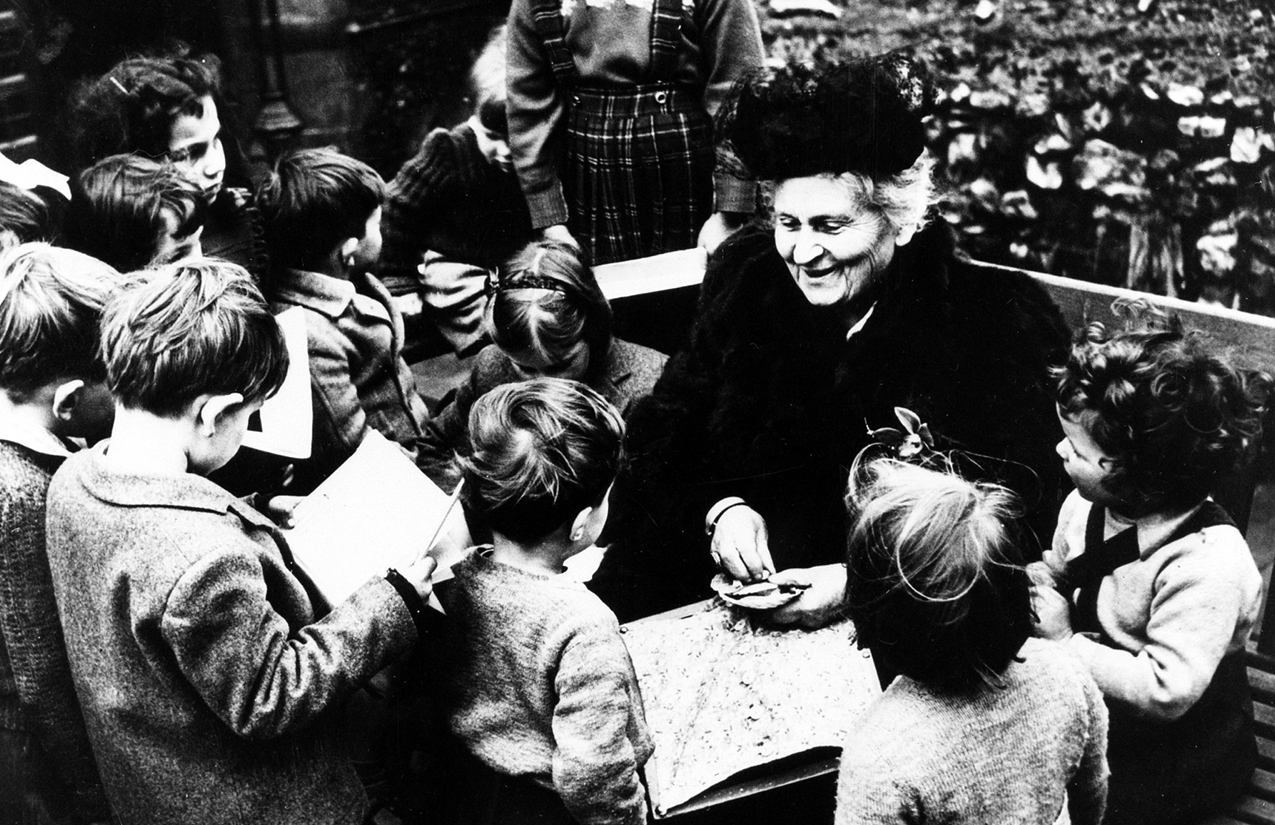
Why is this important? Every pedagogical method, whether “alternative” or “mainstream,” “progressive” or “traditional,” starts with an abstract theory (sometimes only implicit) of what a child is, how her mind works, how she learns. And it is starting from that theory that it deduces a practical method. Dr. Montessori, who was a scientist by training and never claimed to be anything more, worked the other way around. She started tinkering with materials, first in a hospital setting with patients and then in her first school, whose original iteration had a rigid class schedule and almost none of the distinctive attributes of today’s Montessori schools, like child-size furniture and free access to activities. Those aspects were introduced over time and tested, and they worked.
The same was true with the activities. From her findings, Dr. Montessori developed theories, of course, but then put the implications from her theories to practical tests. That is, in a word, the scientific method. The Montessori Method is the only pedagogical method that was completely developed and refined through the scientific method. And here lies the qualitative difference.
The Montessori Method is the only pedagogical method that was completely developed through the scientific method.
The sum total of what humans could learn about pedagogy did not end when Maria Montessori died. But unfortunately, her spirit of rigorous experiment was for the most part not carried on. To take just one example, in my experience most Montessori advocates are opposed to children using digital devices. But given the real Maria Montessori’s enthusiasm for, well, almost anything, there can be no doubt that had she been alive for the computer revolution, she would have started experimenting with electronic devices and with software, probably ending up with something for which we have no equivalent today.
The Opportunity Catholicism Missed
Maria Montessori was a deeply devout Catholic and a daily communicant. She believed her method was firmly grounded in the Gospel even as it was based on science, since indeed the two could never contradict each other, as St. Thomas Aquinas taught. She fostered the development of the Catechesis of the Good Shepherd, a religious instruction program using her methods, which has also shown amazing results in bringing children to know and love the Lord.
And the Method is indeed grounded in the Gospel. All of Montessori education is geared toward promoting “positive freedom” or the idea that “freedom” does not mean the power to do whatever you want to do but rather freedom from the negative tendencies that would lead you to the wrong choices, giving you the ability to do what you have been called to do. A Montessori classroom is the living embodiment of the Catholic truism that true freedom can be exercised only in an ordered framework. Dr. Montessori saw her goals as moral education, scientific education and artistic education—or education for the good, the true and the beautiful. The Method is incarnate; it reaches the soul through the body. And, of course, with those beautiful objects and precise rituals, it is liturgical.
All of Montessori education is geared toward promoting “positive freedom.”
So, as we must ask of the world, we must ask of the church: Why did we ignore Maria Montessori? Why isn’t Montessori education as associated with Catholicism in the public mind as the rosary and fish on Fridays?
Imagine for a second if the church had adopted Montessori education as its blueprint early in the 20th century. Imagine first the countless lives that would have been transformed, the people who would never have reached their full potential in a traditional school. Then imagine the greater robustness of the church. (How many have left the church because of angry teachers or utterly boring catechism lessons?)
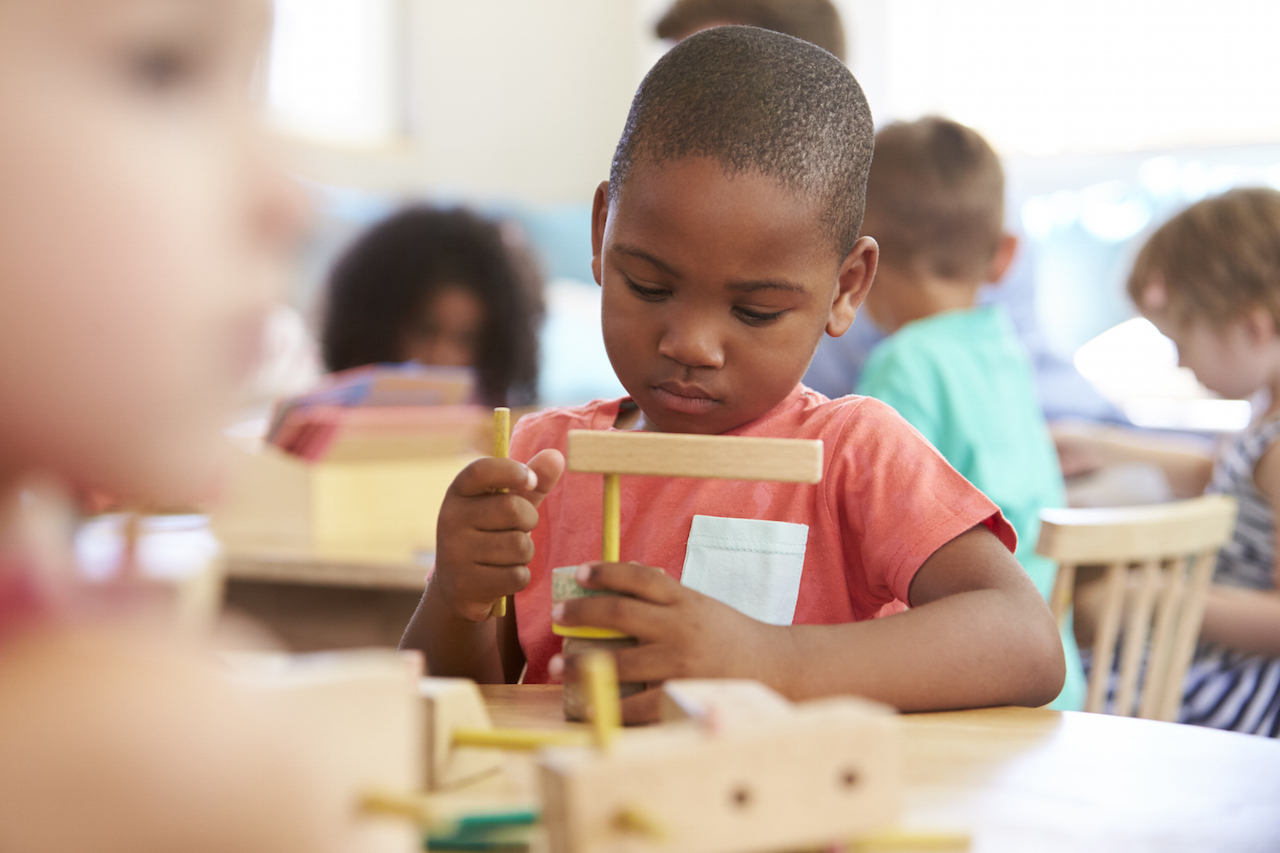
Catholics keep wondering what they have to give the modern world that it does not already have. Imagine what it would have meant for the church’s witness if, by the 1950s, it was a commonly known fact that Catholics were those strange people who, for example, did not hit their children at school (and everyone could see that it was because they simply did not need to).
Why didn’t we do it? We did not think we could make a difference.
By the end of the 19th century, the church had been the biggest educational institution in the world by far, continuously for centuries. Indeed, it had literally invented the school, as well as the university. But by that time, modern nation-states had taken over mass public education. The church could not compete. Modern states had infinitely more money and resources, and they could make school free for everyone and compel attendance, which certainly helped turnout. They were just more “modern.”
What we think of as the “default” sort of school is the product of a very specific historical time frame.
And suddenly countries were faced with the question of pedagogy for the first time. Most of them ended up copying the Prussian model. The vast majority of schools, public and private, across the West, despite some variations due to history and geography, still follow the same basic model invented by a militaristic dictatorship in the 19th century. As Prof. Angeline Lillard recounts, what we think of as the “default” sort of school (tables, students of the same age, whiteboard) is the product of a very specific historical time frame and of very specific philosophical assumptions that are either questionable or, from a Catholic perspective, downright heretical.
This comes from the era of the Industrial Revolution, when schools were explicitly modeled on factories, with children as inputs. Bells were introduced to mimic the bells on the factory floor that signify breaks. Learning was induced through a reward and punishment system. (Germany and other European nations were also anticipating mass warfare, and schools needed to produce disciplined future soldiers.)


The approach made practical application of philosophical assumptions. This form of schooling is based on the Lockean tabula rasa view that we come into this world as blank slates, as simple receptacles for information, and on the Cartesian dualism between mind and body. Accordingly, the best way to learn something is to receive it in a disincarnate way. Those are assumptions contrary to the wisdom of the Catholic tradition.
Against the Lockean view, Montessori supports the authentic Christian view that every child has a unique, God-given identity and gifts and must, by grace, develop them. As opposed to the Cartesian view, this approach rejects mind-body dualism. So why didn’t the church embrace it when it came along?
Because we did not—we could not—believe we could do better. In the late 19th and early 20th century, the pace of technological change was much faster than it is today, and the overall sense of the unstoppable nature of technological and organizational progress was pervasive. There was no sense born of world wars and environmental catastrophes that technology could also bring forth tragedy. In philosophy and theology, perhaps, the church was standing athwart history yelling “Stop!” But it was still impressed by all those engineers and industrialists and organizational experts who, collectively, embarked on the most ambitious school-building program in all of human history. They were the scientists. We were amateurs next to them. Of course the best we could do was copy.
And so here we are.




